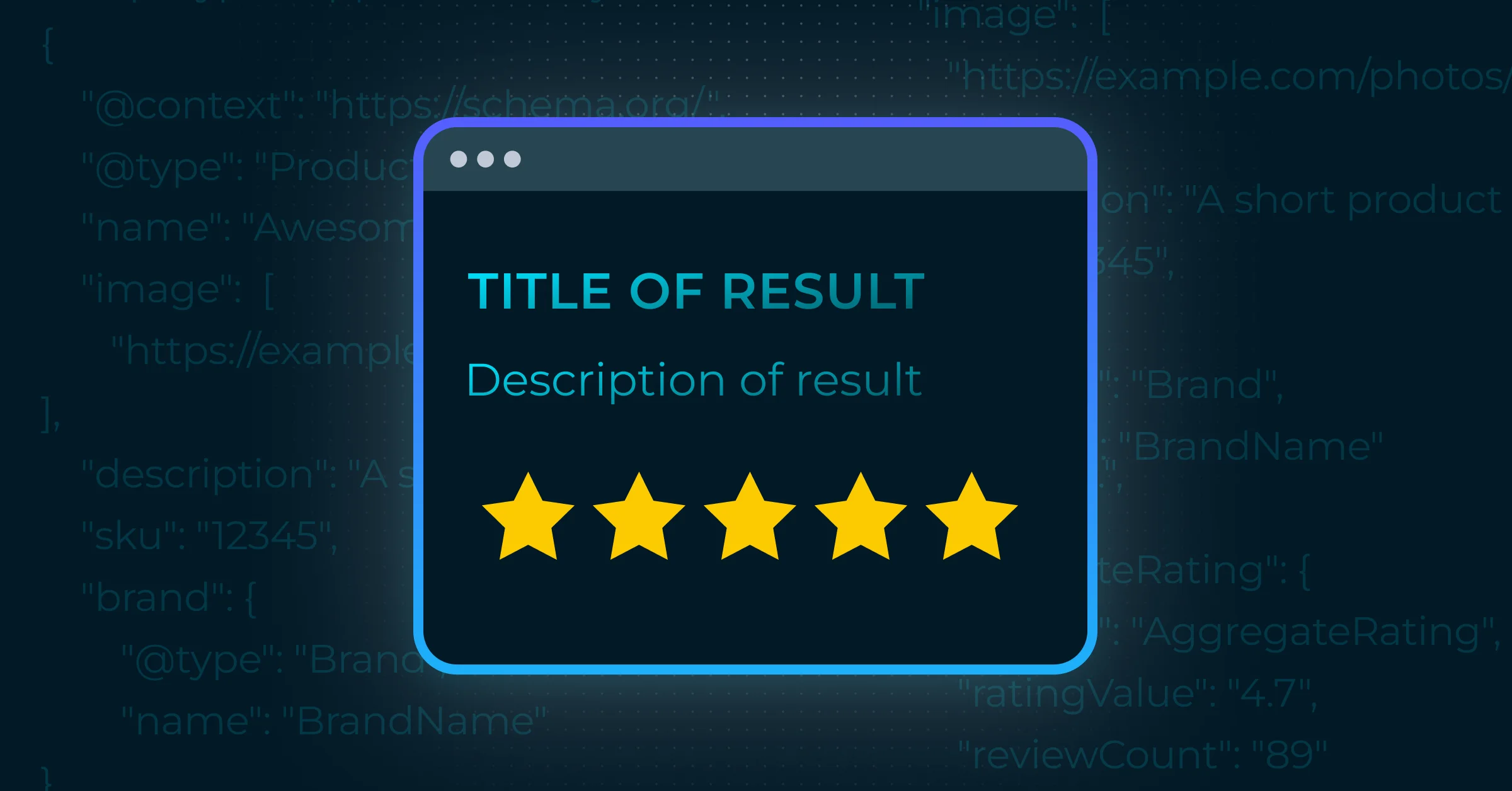Review SEO & Schema — The Invisible Boost
Leveraging structured review data is one of the most efficient ways to improve SEO performance. When implemented correctly, schema markup enables your product pages to earn enhanced search features—like eye-catching star ratings—on Google.

How Reviews Drive Organic Search Performance
Customer reviews contribute to organic visibility in several powerful ways:
💡 Pro Tip
Even if your ranking doesn't improve, a visually enhanced listing can capture more clicks than a higher-ranked competitor.
Understanding Review Schema and Its Impact
Schema markup is a form of structured data that helps search engines understand and categorize your page content. When applied to reviews, it enables rich snippets—those attention-grabbing visual enhancements in search results.
Key schema types for reviews:
Correct implementation can unlock:
Star ratings in SERPs
Displayed review counts
Price and availability (if also marked up)

Note:
Google limits rich snippet eligibility to certain page types (e.g., product detail pages). Misapplying schema—such as on homepages—can result in penalties or removal from rich results.
Implementing Review Schema: Formats and Tools
You can implement structured data using two main formats:
JSON-LD
Google-recommended, easy to maintain
Not visible in HTML source for users
Microdata
Embedded inline within visible HTML
Complex and more error-prone
| Format | Advantages | Drawbacks |
|---|---|---|
| JSON-LD | Google-recommended, easy to maintain | Not visible in HTML source for users |
| Microdata | Embedded inline within visible HTML | Complex and more error-prone |
JSON-LD is the recommended format. Platforms like RaveCapture and Shopify typically generate it automatically.
Integration Options:
E-commerce plugins (e.g., Shopify review apps)
Built-in tools (e.g., RaveCapture's auto-embedded markup)
Manual developer implementation via CMS or page templates
🛠️ Schema Generator Tools for Non-Developers
Staying Compliant with Google's Guidelines
Avoid common pitfalls that can get your site penalized or disqualified from rich snippets:
Don't:
❌ Apply review markup to non-product pages (e.g., your homepage)
❌ Use fake, fabricated, or unverified reviews
❌ Implement schema without displaying visible reviews on the page
Do:
✅ Use schema only where authentic reviews are published
✅ Ensure each review includes both a written comment and a star rating
✅ Keep your structured data in sync with on-page content
Important:
Since Google's 2023 update, enforcement has tightened. Pages that misuse structured data are more likely to lose visibility or face penalties.
Measuring the Impact of Review Schema
While review schema's impact isn't always easy to isolate, you can monitor key indicators:
Google Search Console
Use the Rich Results Report to verify schema eligibility and indexing
Track impressions and CTR on schema-enabled pages
Google Analytics
Compare organic traffic before and after adding schema
SEO Tools
Use platforms like Ahrefs, Semrush, or Moz to preview SERP snippets and track changes
Even without ranking improvements, higher CTR can drive meaningful traffic gains.
Beyond Google: Schema's Extended Benefits
Structured review data also improves visibility on platforms beyond Google:
Microsoft Bing and Microsoft Shopping
Product knowledge panels in search engines
Conversational search and AI tools that draw from structured sources
As search becomes more visual and AI-powered, structured data will continue to expand its reach and impact.
Quick Win Checklist:
- Run Google's Rich Results Test on your top PDP to confirm existing review snippets.
- Add a JSON-LD `AggregateRating` snippet (ratingValue + reviewCount) into your PDP template.
- Enable your review platform's auto-embed schema feature (e.g., RaveCapture) for site-wide coverage.
- Ensure every review includes both stars and a text comment—both are required for rich snippets.
- Check Google Search Console's Rich Results report weekly and fix any schema errors.
Review SEO is more than a technical enhancement—it's a strategic growth lever. Implementing schema markup correctly can boost your organic visibility, improve click-through rates, and solidify your product's trust signals in search. It's the invisible optimization that delivers very visible results.
